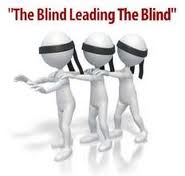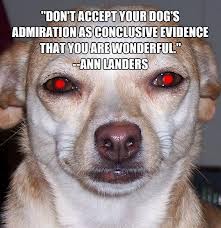Self-coaching can be a like the blind leading the blind. At best, the rate of improvement is slow and inconsistent. At  worst, the group perpetuates behavior that is not competitive. This is also true of peer coaching where they exert their influence based on equally inaccurate perceptions of what they do and too often steers the colleague in the wrong direction.What follows summarizes why self- and peer-coaching alone can be ineffective in developing sales peoples’ self-analytical abilities – A critical part of sales mastery. Then we overview how to solve this problem. The context is that since 2008 sales management can be summed up as, “Do More with Less” One result being that technology has accelerated the trend toward inside sales. In fact, there are now more inside sales people in USA than their traditional outside sales counter parts. In turn, this increasingly spawned the view that sales people can coach themselves entirely. This thinking is a logic based on increasing spans of control and a lack of sales managers both in ability and their inclination to coach their sales people
worst, the group perpetuates behavior that is not competitive. This is also true of peer coaching where they exert their influence based on equally inaccurate perceptions of what they do and too often steers the colleague in the wrong direction.What follows summarizes why self- and peer-coaching alone can be ineffective in developing sales peoples’ self-analytical abilities – A critical part of sales mastery. Then we overview how to solve this problem. The context is that since 2008 sales management can be summed up as, “Do More with Less” One result being that technology has accelerated the trend toward inside sales. In fact, there are now more inside sales people in USA than their traditional outside sales counter parts. In turn, this increasingly spawned the view that sales people can coach themselves entirely. This thinking is a logic based on increasing spans of control and a lack of sales managers both in ability and their inclination to coach their sales people
The Problem with Self-Coaching
- The gap between what I think I do with a customer and what I actually do is at best inconsistent and incomplete. (See Rackham’s early work with Sales people)
- Even if I do what I think I do, how do I know what the customer values?
- Especially for those who are inexperienced in selling a product, service or solution, I think I know what I do but I have no means of knowing what good sounds like or knowing how to emulate that skillful performance.
- So, my attempts to “sound good” often address the superficial of what we think works and not what actually creates impact. It’s like re-spraying an older car in the hope it will go faster.
- Even top performers who are regarded as stars in an organization have no way of knowing how much better they can be. Like the local athlete who can do 46 secs for the 400 yards and beat everyone locally only to find out that to even to qualify for the Nationals they have to do 45 secs.
The Research
Here’s a summary of what the research shows based on Travis J. Carter and David Dunning’s work at Cornell University[1] People’s view of how good they are often diverges from their true level of competence. These misperceptions arise because self-evaluation is an intrinsically difficult task. They don’t have all the data they need for accurate self-evaluation for two reasons.
- When making self-judgments, sales people lack crucial categories of information necessary to reach accurate evaluations. For example, those sales behaviors which increase the chances of making a sale and those that don’t
- Although people receive feedback over time that could correct faulty self-assessments, this feedback is often biased, difficult to recognize, or otherwise flawed. This often means sales managers don’t know these sales behaviors either not can they observe them accurately
Because of these difficulties of using such limited and misleading data, it is unreasonable to expect that sales people to accurately assess of their own skills. As Ann Landers once wrote:
Yet, the rewards for accurate self-assessment are obvious. If sales people know their strengths, they can make profitable decisions about how to spend their time and apply their efforts. Conversely, the extent that sales people know their weaknesses, they can avoid situations that might lead to costly mistakes. Better yet, they can work on those shortcomings to rid themselves of them. However, recent investigations in behavioral science paint a vexing portrait about people’s success at self-insight. Such research increasingly shows that people are not very good at assessing their competence and character accurately. They often hold self-perceptions that wander a good deal away from the reality of themselves (see Dunning, 2005; Dunning, Heath, & Suls, 2004). For example, studies show that the perceptions people hold of their competence is typically related to their actual performance, at best, show only a modest correlations (Falchikov & Boud, 1989; Harris & Schaubroeck, 1988; Mabe & West, 1982). Too often, the relationship between perception and reality of self is quite weak or even evaporates completely. For example, Medical students’ evaluations of their communication skills, as they complete their training, bear little relationship to how their supervisors and their patients rate them, although supervisors and patients tend to agree with each other’s evaluations substantially (Millis et al., 2002). Beyond this, people also tend to be overconfident in their skill and ability, providing rosy self-judgments that are not true. For example, people on average tend to say they are more invulnerable to disease than the average person – although it is impossible for the average person to be ‘above average’ in invulnerability (Larwood, 1978). People also over-predict the occurrence of positive, and under-predict the occurrence of negative, events in their lives (Weinstein, 1980). Lawyers, for example, overestimate the likelihood that they will win the case they are currently working on (Loftus & Wagenaar, 1988). Software developers chronically underestimate the amount of time that it will take to write a new piece of software (Cusumano & Selby, 1995), an example of a general tendency to underestimate how much time projects will take to complete (Buehler,Griffin, & Ross, 1994). In summary, psychological literature suggests that people have some, albeit only a meager, amount of self-insight. This is not to say that self-knowledge is non-existent or that people are necessarily less accurate in self-judgments than other judgments, although that is sometimes the case (Dunning, 2005). Rather, because of the importance of accurately assessing one’s strengths and weaknesses, and the lifetime of opportunities people have to learn about oneself, it is nonetheless impressive that self-judgments often lie closer to worthless than they do to perfection.
The Solution
So, it makes good prudent and economic sense for analyzing good and average before coaching or training is selected or designed which then allows:
- Focusing on the smallest change in average people’s performance needed and reduces the distractions of training the superficial or unnecessary.
- For example, in one recent meeting the customer uses Solution Selling but finds it cumbersome. It turns out that his customers have already decided to buy before they talk to a rep so early discovery skills are not needed, especially as most customers are mature and experienced buyers of the service.
- Comparing both good and average with external standards define what good really looks like.
- Once the analysis shows the essentials of superior performance then you can devote the available cash to skills mastery. This includes:
- Developing sales people’s self-analytical abilities
- Developing peer coaching skills like the disciplines of separating observation from diagnosis and helping develop solutions that have their colleagues commitment
The Results
Replication is possible when using a standardized basis for both individuals and others assess a performance, whereas unstructured self-coaching takes place in a vacuum. The value to the bottom line is:
- Time to performance is reduced
- It raises the bar for the whole sales force
- It challenges and improves the recruit process.
To help salespeople to behave more skillfully with customers we have to ask:
What are some of the conditions needed for a sales person to use
the right sales behaviors?
These conditions include:
- Sellers must be able to perceive accurately the behaviors that they are using and those used by the customer. To do this the seller must have a language for recognizing and describing behavior – a practical categorization system.
- Sellers must also know which behaviors are likely to be better under different conditions – or be capable of finding out by experimenting with those behaviors and observing the results.
- Sellers must be able to produce the right behaviors at will. To do this they must have a wide repertoire of available behaviors and be flexible in their use.
So it is reasonable to decide on some goals for a sales performance project:
- To provide sellers with a vocabulary to help them identify, understand and make decisions about their own behavior and those of their customers.
- To reduce discrepancies between sellers’ actual behaviors and what they think they do (and their customers)
- To increase the range of behavioral options open to sellers and should show to sellers their ability to change their behavior when necessary
The next step is deciding what technology you can use to support this effort. The easiest route is to use existing technology that records your sales people’s calls, assuming your State allows “One Party” on call record legally. The problem comes when you have an overwhelming amount of observations to analyze. Here are some tips for overcoming this problem by segmentation, e.g.
- Top and average sales people
- Then sample their calls by length, say five longest and five shortest
- Use call partitioning, where salespeople use the technology to get people to partition their calls.
- Having done that start pulling those calls both good and not so good to analyze
- Facilitate manager observation training to make sure calls are observed accurately
- Put in places a schedule to make sure all sales people are covered.
[1] Faulty Self-Assessment: Why Evaluating One’s Own Competence Is an Intrinsically Difficult Task (Travis J. Carter* and David Dunning – Cornell University)
Contact Form
[contact-form][contact-field label=’Name’ type=’name’ required=’1’/][contact-field label=’Email’ type=’email’ required=’1’/][contact-field label=’Website’ type=’url’/][contact-field label=’Comment’ type=’textarea’ required=’1’/][/contact-form]

